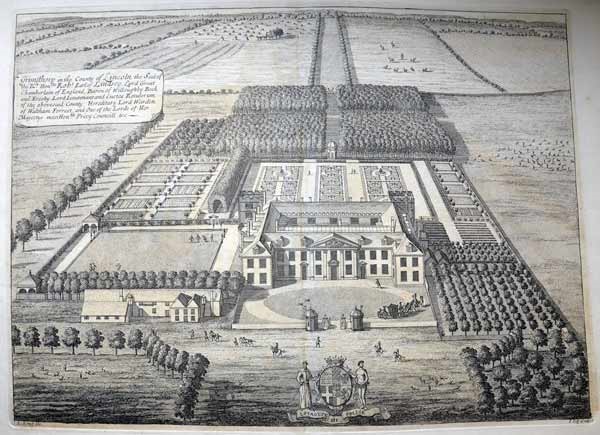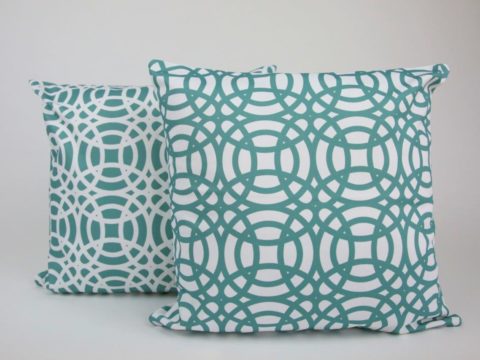Grimsthorpe Castle
Chapter 3 : History
The early history of Grimsthorpe is uncertain. The oldest element of it is the tower known as King John’s Tower, which suggests that a licence to crenellate was either granted by the King, who reigned 1199-1216, or that it was owned by him, although the surrounding land was probably held by Ranulph, Earl of Chester and Lincoln (1170 – 1232).
At some point the lands came into the hands of Francis Lovell, Viscount Lovell, but were confiscated by Henry VII for Lovell’s part in the Lambert Simnel rebellion of 1487. The property remained in Crown hands until 1516 when it was granted, along with 90,000 acres of prime Lincolnshire land as far as Boston and the Wash, to William Willoughby, Baron Willoughby d’Eresby, on his marriage to Maria de Salinas, the closest lady-in-waiting, and friend of Queen Katharine of Aragon.
Lord and Lady Willoughby accompanied the King and Queen to the Field of Cloth of Gold, and remained in favour (Henry VIII’s ship, the Mary Willoughby, was named for her) until the breakdown of the royal marriage. Fortunately for Lord Willoughby, he died in 1526 before allegiances were tested. Lady Willoughby was by Queen Katharine’s side at her death.
On Lord Willoughby’s death his title and lands were inherited by their daughter, Katherine - not without some wrangling with her uncle about which lands were entailed to heirs male.
As she was only 7 at the time of her father’s death, Katherine’s wardship was granted to Charles Brandon, Duke of Suffolk, brother-in-law of Henry VIII. It was anticipated that she would marry his son, Henry, Earl of Lincoln. She would thus have been the king’s niece-by-marriage, and, had the young earl lived, conceivably Queen of England. However, on the death of his wife, Mary, the French Queen, Suffolk by-passed his son, and married his fourteen year old ward himself – in a move that created some talk, even in a period used to disparity of age between spouses.
In 1541, Suffolk and Katherine hastily extended the property at Grimshorpe in anticipation of a visit by Henry VIII, Queen Katheryn Howard and their court, en route to York, where Henry intended to show his might to the cowed citizens of the north, following the putting-down of the Pilgrimage of Grace. Conveniently, the nearby Abbey of Vaudey, dissolved in 1536, provided limestone for construction.
The court arrived in early August, and stayed several days. Meeting of the Privy Council were held on 6th and 7th August. Present were the Dukes of Norfolk and Suffolk; the Lord Privy Seal (William FitzWilliam, 1st Earl of Southampton); the Lord Admiral (John, Lord Russell), the Bishop of Durham (Cuthbert Tunstalls), Sir Thomas Wriothesley, Sir Richard Rich and others.
Katherine and Suffolk spent a good deal of time at court, both during Henry’s reign, and that of Edward VI, by which time she was widowed. On the death of Sir Thomas Seymour, Mary Seymour, who was his daughter by Henry VIII’s widow, Queen Katherine Parr, was sent to Katherine at Grimsthorpe. Unfortunately, Katherine appears to have grudged the child her house room and wrote to the Council in 1549, complaining about the cost of her upkeep. Considering Katherine’s vast wealth, it is not a very charitable letter.
Katherine was a close friend of Sir William Cecil, a near neighbour whose family were based at Stamford, some ten miles to the south of Grimsthorpe and there are many letters from her to him in the state papers, dated from the castle. The correspondence includes the letter she wrote on the death of her two sons by Suffolk, Henry and Charles, both short-lived Dukes of Suffolk. The boys died on the same day, of sweating sickness, at Cambridge. On a lighter note, she sent him a buck from Grimsthorpe Park in June 1552, and invited him to hunt there.
Although terribly grieved by the loss of her sons, Katherine built a new life for herself, marrying a member of her household in a match that created scandal at the time, for the disparity of rank. She and her second husband, Richard Bertie, went into exile in the reign of Mary I – they were strong reformers and there was no place for them at the English court. During their absence, the government made a move to confiscate the lands of Protestant exiles, but the House of Commons rejected the bill – speaking against it was Katherine’s friend, Cecil.
On their return to England in 1559, the Berties settled at Grimsthorpe, now with two children – Peregrine and Susan. Katherine was no more welcome at the Elizabeth’s court, than she had been at Mary’s.
In 1580, on Katherine’s death, Peregrine inherited the title of Baron Willoughby d’Eresby and Grimsthorpe and served in a number of roles in Elizabeth’s government. He did not alter the castle.
During the 17th century, the 14th Baron, Peregrine’s son, was granted an earldom, and took the name of Earl of Lindsey. He was instrumental in the draining of parts of the fens around Boston. During the Civil War, the Berties fought for the King (surprisingly, given that they were based in a strongly Parliamentary area, and had a history of radical Protestantism). The 1st Earl was killed at the Battle of Edge Hill in 1642.
New extensions in the classical style were made to the castle during the 17th century by the 3rd Earl of Lindsey, but these were swept away with the fabulous construction by Sir John Vanburgh in the first quarter of the 18th century. Sir John was commissioned by Robert Bertie, who was Baron Willoughby as well as first Earl, then Marquess of Lindsey, and, finally, 1st Duke of Ancaster and Kesteven. The grounds were laid out by Lancelot ‘Capability’ Brown.

Grimsthorpe continued its descent with the Duchy of Ancaster, until the death of the 4th Duke, childless, in 1777. The Barony of Eresby went into abeyance, as there was more than one female heir, but was eventually settled on his elder sister, Priscilla, who took the title of 21st Baroness.
Priscilla’s daughter-in-law, Sarah Clementina Drummond (in the picture by Lawrence, mentioned above), who brought Castle Drummond in Perth to the family. Priscilla’s grand-daughter, Clementina, was 24th Baroness Willoughby. She married Sir Gilbert Heathcote, who was created Earl of Ancaster. The family seat became Normanton Hall and passed through the generations until a major fire in the early 1920s damaged it beyond economic repair. The family, together with many of the treasures from Normanton, returned to Grimsthorpe and restored it extensively.
The Earldom of Ancaster was created in tail male, so was not inherited by the current Lady Willougby d’Ereseby. Lady Willoughby, who divides her time between Grimsthorpe and Drummond, was one of HM The Queen’s attendants at her coronation.




